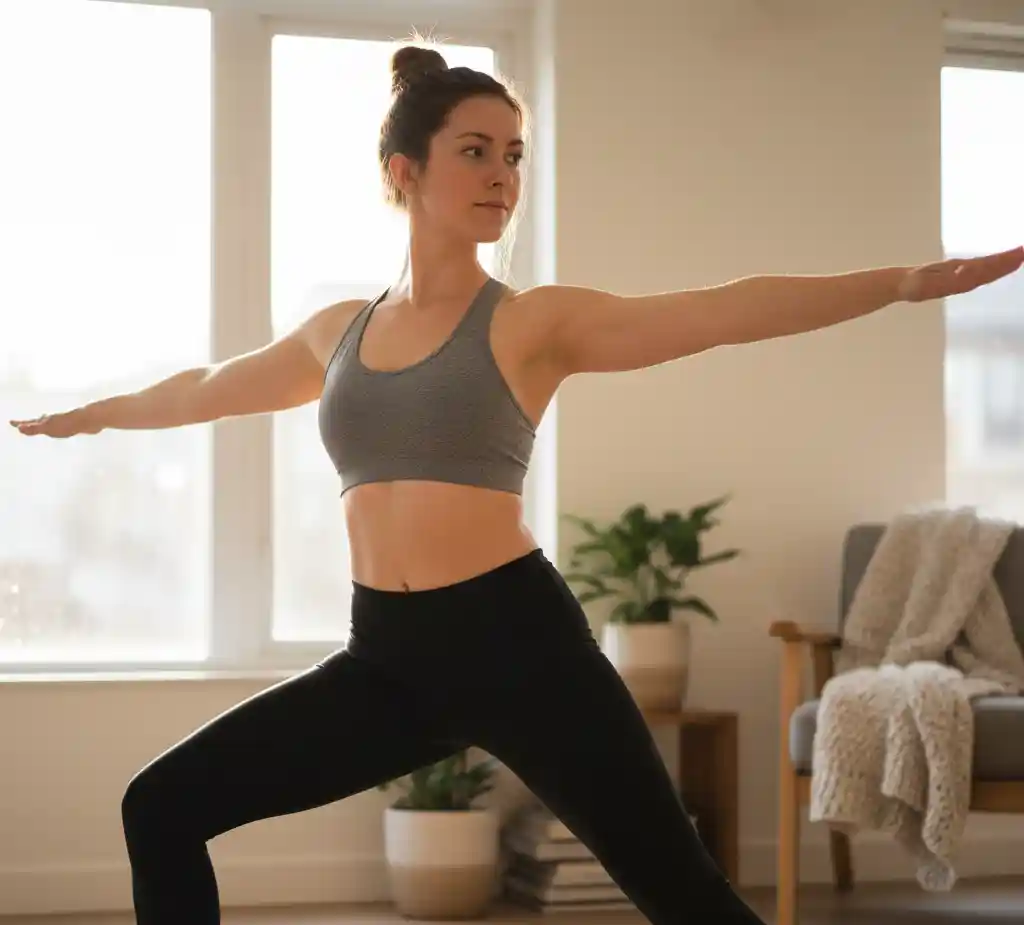I bet you have heard about hot yoga, a huge trend that has been aroynd for years, promising deeper stretches and greater flexibility thanks to those super-heated rooms. But does increasing the temperature actually lead to better, long-term flexibility gains? Let’s examine how the science to see how different room temperatures affect your flexibility.
The Benefit of the Heated Room: Acute Flexibility
There’s no doubt that your muscles feel looser and you can stretch further when practicing in a warm environment (think 85°F to 105°F, or 29°C to 40°C). This immediate feeling of greater range of motion is one of the main drawcards of hot yoga.
The Science of Heat:
- Muscle Pliability: Heat helps to warm the muscles, making them more pliable and less resistant to lengthening. It’s similar to why physical therapists often use heat packs before stretching an injured area.
- Reduced Resistance: When your connective tissues and tendons are warm, they become less viscous, allowing for a perceived deeper stretch.
- Circulation Boost: Heat encourages vasodilation (widening of blood vessels), increasing blood flow and bringing more oxygen and nutrients to the muscles.
This all sounds great for flexibility, and indeed, you will feel more flexible during the class.
The Cooler Reality: Long-Term Gains
And it’s time for the fact that will make you second guess what you just learnt. Many experts and studies suggest that the increased flexibility felt in a hot room is largely temporary. Once you leave the heat, your tissues cool, and your flexibility often returns to its pre-class baseline.
The Power of Room Temperature Yoga:
- Active Flexibility is Key: Some research suggests that flexibility training is far more effective when you focus on active drills rather than passively sinking into stretches. In a cooler, room-temperature environment (around 68°F to 78°F, or 20°C to 25°C), you are naturally forced to use more of your own muscle strength to get into and hold poses. This active engagement is what builds long-term, functional flexibility.
- The Injury Risk: The deceptive feeling of deep flexibility in a hot room can lead to overestimating your abilities and potentially pushing past a safe point, increasing the risk of muscle strains or ligament damage. Cooler temperatures help you stay more in touch with your body’s true, unassisted capacity.
- The Unexpected Finding: A study comparing flexibility gains after a single session of hot yoga vs. yoga in a thermoneutral (room-temperature) environment found that flexibility was actually 10% greater following the room-temperature class. While more research is needed, this suggests that the dramatic acute effect of heat may not translate to superior post-session flexibility.

Finding Your Ambient Sweet Spot
The key isn’t necessarily choosing one extreme over the other, but understanding the benefit of a comfortable, slightly warm room (often around 75°F to 80°F, or 24°C to 26°C) for a traditional Vinyasa or Hatha practice. This gives you a gentle warmth to aid muscle response without the potential risks and temporary nature of extreme heat.
| Environment | Temperature Range (Approx.) | Primary Effect on Flexibility | Focus |
| Hot Yoga | 90°F – 105°F 32°C – 41°C | High acute (temporary) increase | Pliability, feeling of depth |
| Warm Yoga | 80°F – 90°F 26°C – 32°C | Comfortable muscle response | Warm-up, gentle depth |
| Room Temp Yoga | 68°F – 78°F 20°C– 25°C | Focus on active, long-term gains | Strength in range of motion |
While hot yoga can be a satisfying experience that helps you explore a deeper range of motion on the mat, if your goal is sustainable, functional flexibility you can access anytime, anywhere, consistent practice with an emphasis on active movement in a comfortable, non-extreme environment may be more effective in the long run.
Listen to your body, stay hydrated, and remember: true flexibility is not just about the depth of a pose, but the strength you have within that range of motion.
